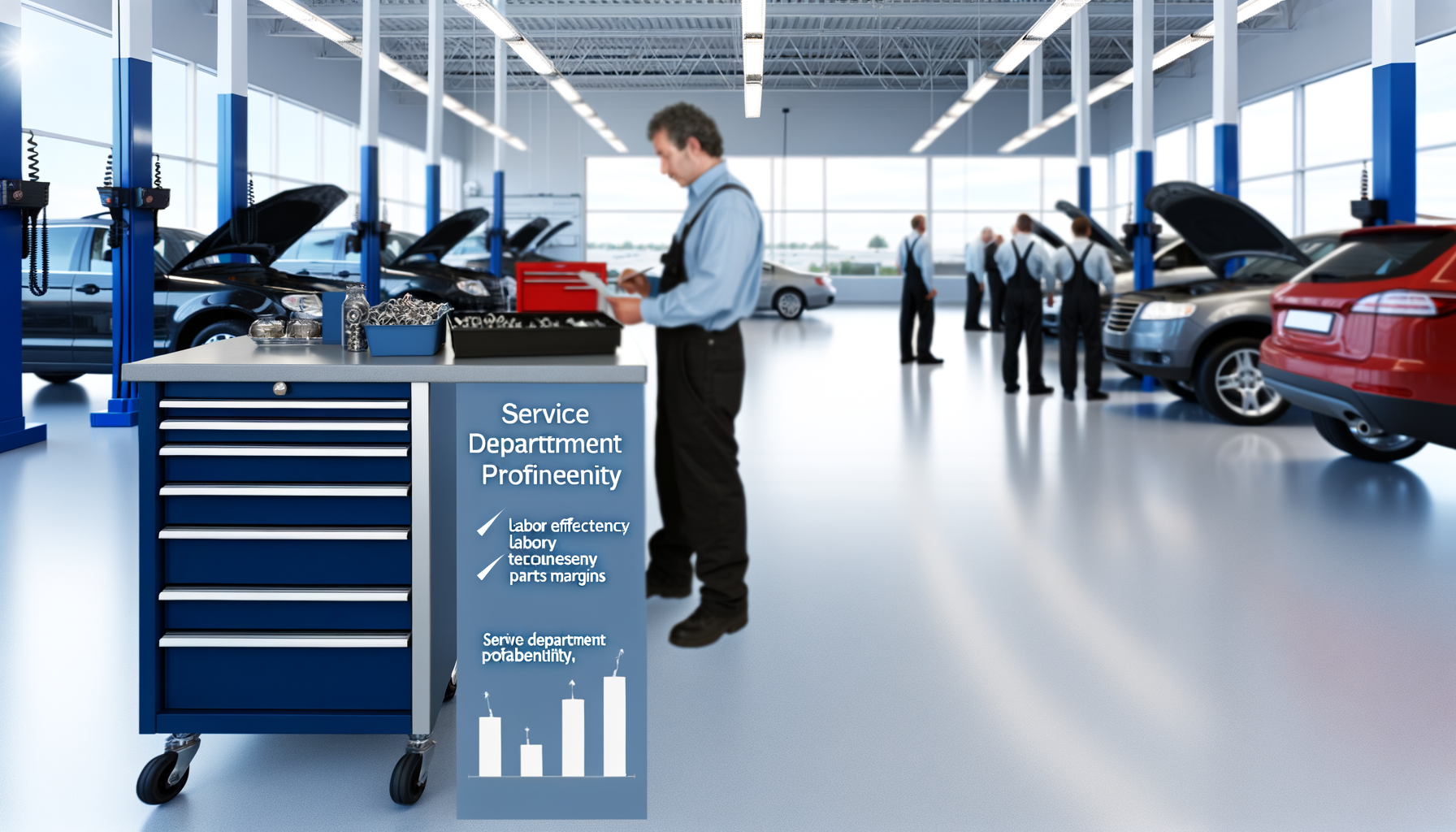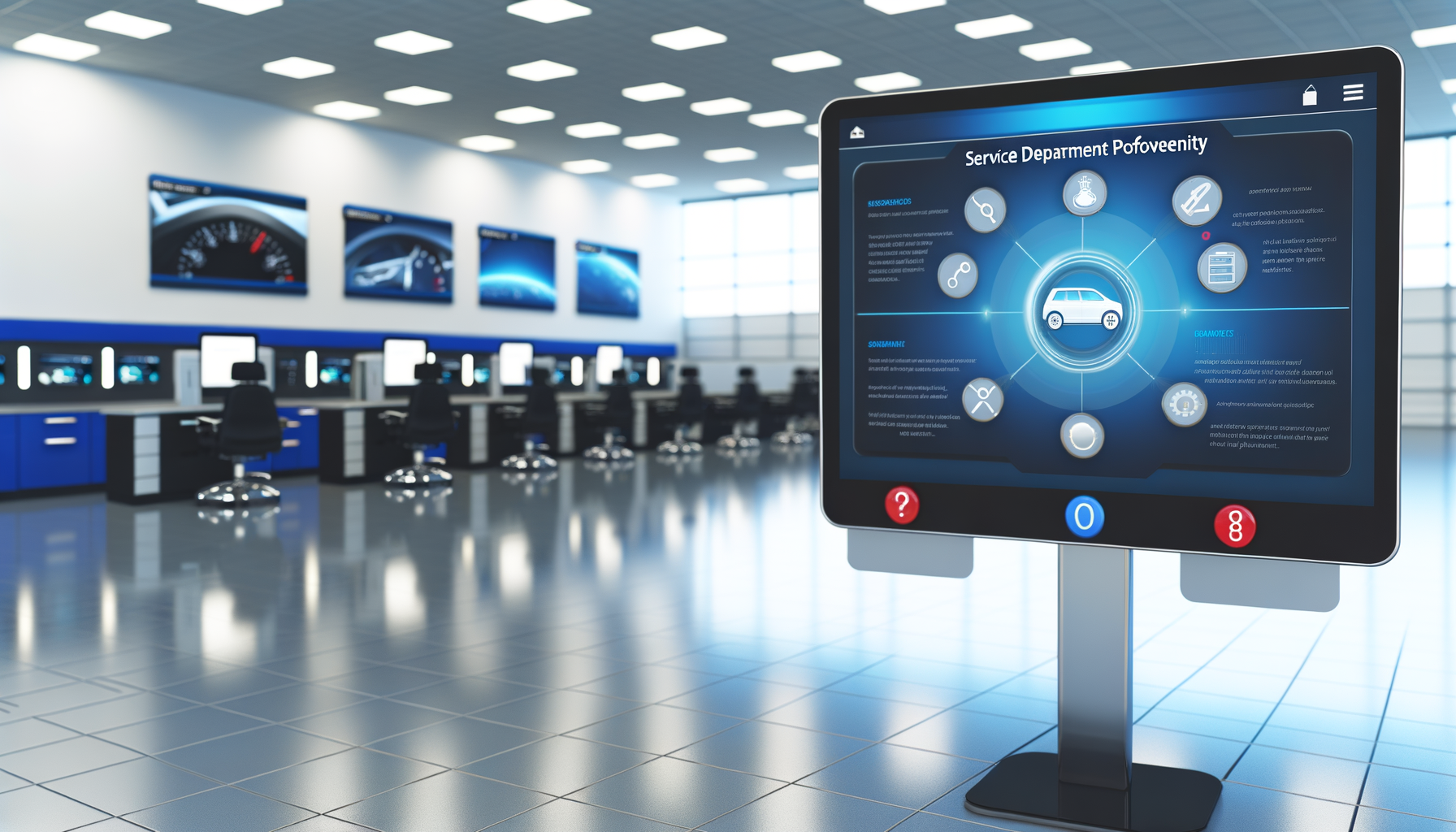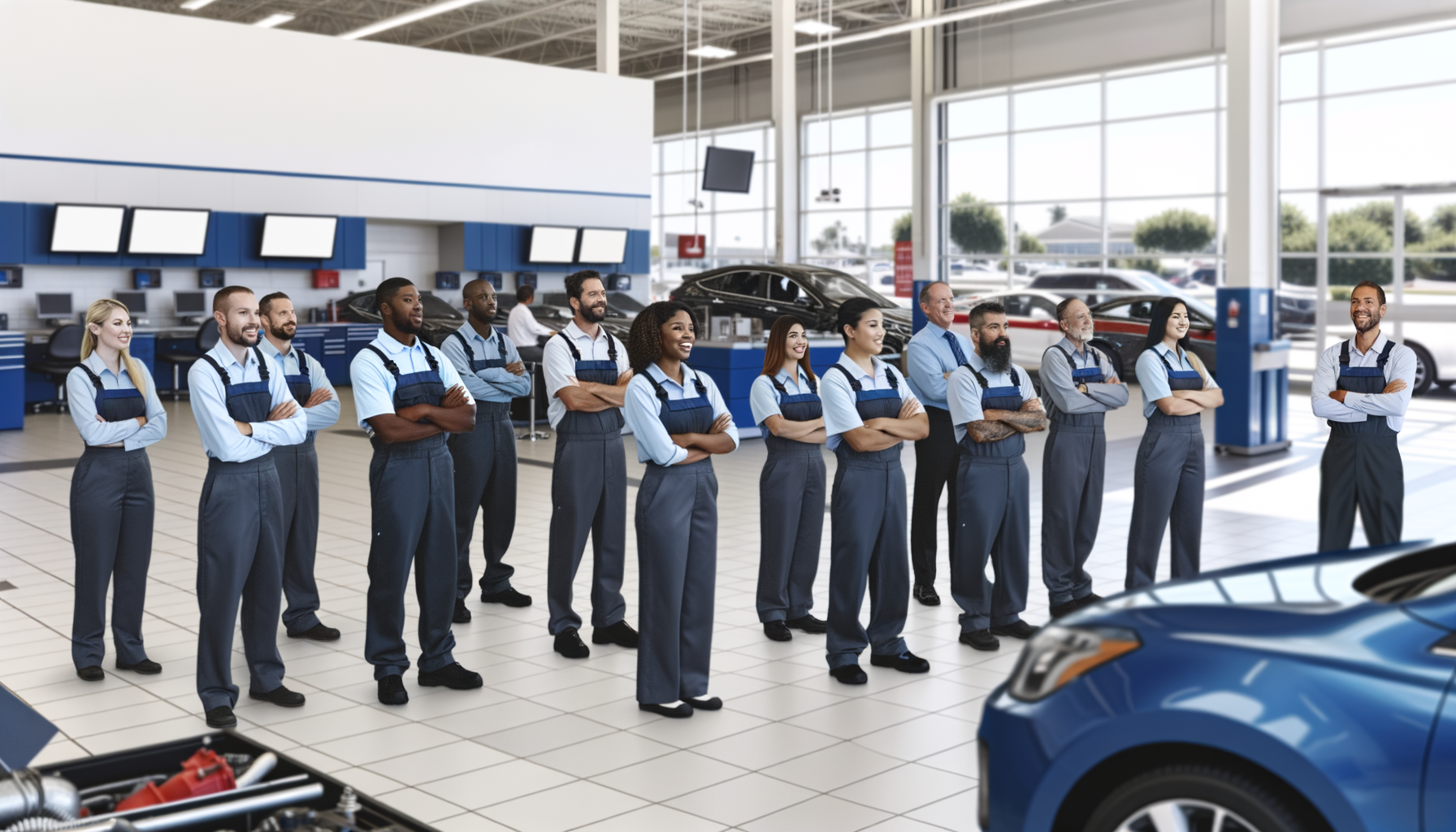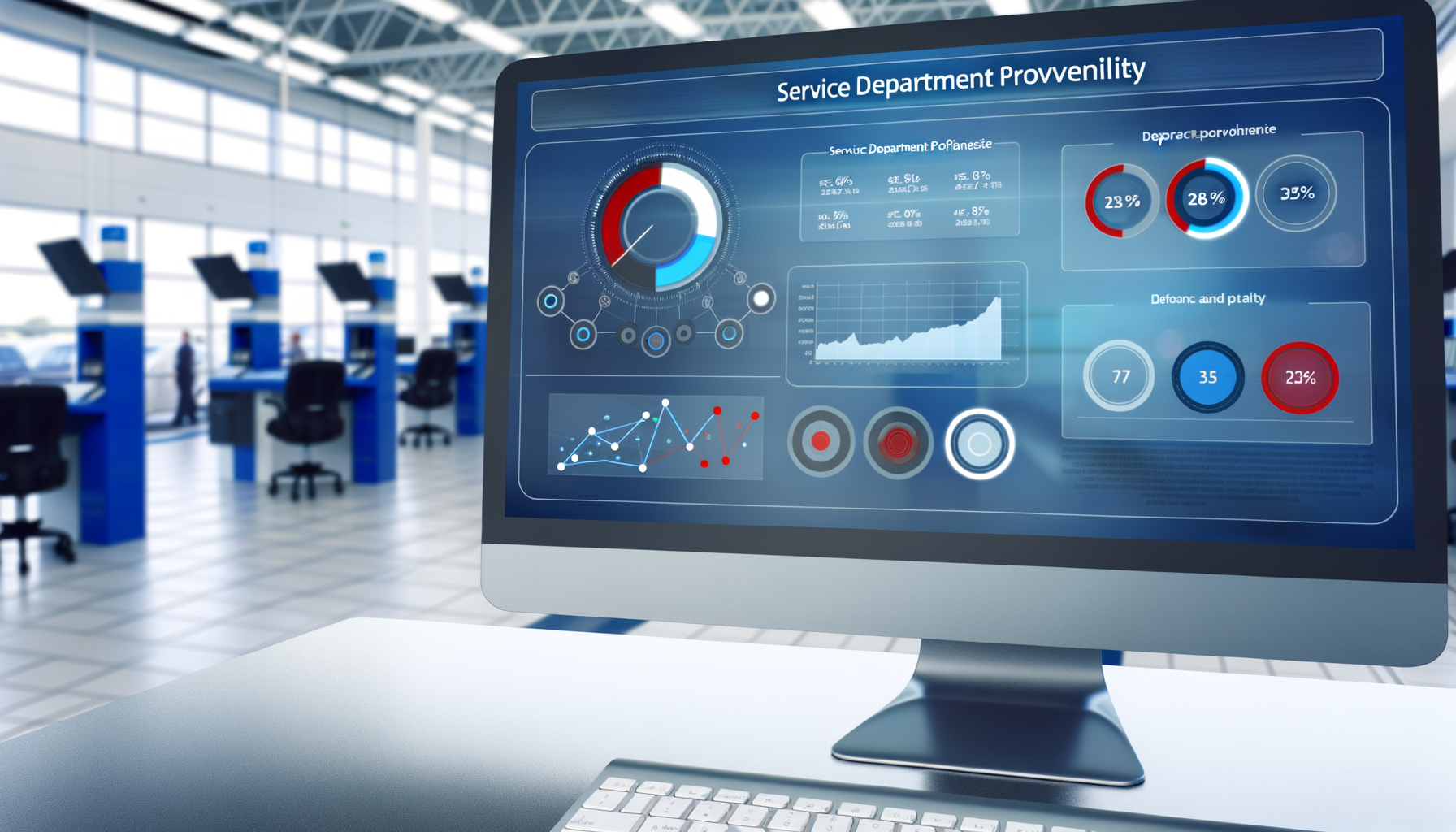Gear & Growth: How Tiny Adjustments Bring Big Returns in Dealership Service

Understanding the Profitability Equation

Profitability in service departments hinges on several critical metrics: labor efficiency, parts margins, and customer retention rates. Understanding these components is crucial for driving revenue.
For example, a dealership can leverage an 8% increase in service upsells by training staff in customer relationship management, thereby improving their parts margin by 10%.
Implement these insights by conducting monthly financial reviews focusing on these metrics, allowing for timely adjustments and interventions.
Leveraging Technology for Enhanced Efficiency

Incorporating technology such as advanced diagnostic tools and digital service platforms can streamline operations and reduce service times, essential for boosting profit margins.
A case study of a dealership utilizing a digital scheduling system shows a 20% reduction in downtime, directly contributing to increased service volumes.
To implement, consider integrating a cloud-based service management software that aligns with your dealership's needs, enhancing real-time data access and communication.
Optimizing Staff Performance and Retention

Staff turnover is a significant barrier to profitability. Effective training and motivational strategies can greatly increase technician productivity and job satisfaction.
Dealerships that implemented skill development programs reported a 15% drop in turnover rates and a 25% increase in job satisfaction scores.
Start by setting up continuous education workshops and performance-based incentives to foster a motivated and skilled workforce.
Customer Satisfaction as a Profitability Driver

Satisfied customers are repeat customers. Elevating customer service through personalized experiences and efficient processes is key to long-term profitability.
By adopting a customer-centric approach, dealerships noted a 30% increase in repeat service appointments and higher referral rates.
Implement customer feedback tools and loyalty programs to build lasting relationships and drive sustained revenue growth.
Data-Driven Decision Making

Data analytics allows service departments to make informed decisions, identifying areas for improvement and strategic growth.
Utilizing analytics, a dealership optimized its parts inventory, reducing excess stock by 18% and freeing up capital.
To capitalize on data, invest in analytics tools that provide actionable insights into operational performance and customer trends.
Implementing Automation for Cost Reduction

Automation in routine tasks can significantly cut costs and improve service efficiency, from appointment scheduling to parts ordering.
A dealership implementing automation saw a 25% reduction in administrative costs and improved service throughput by 12%.
Begin by automating repetitive tasks with tools like Auto Pro Solutions, which supports automated scheduling and inventory management.
Navigating Current Trends and Challenges

The automotive landscape in 2025 is characterized by increased EV repairs, regulatory changes, and parts shortages, all affecting service operations.
Recent data shows a 15% rise in EV-related service requests, challenging traditional service departments to adapt quickly.
Stay ahead by investing in EV technician training and diversifying parts suppliers to mitigate shortages.
Related Topics
Ready to take your service department to the next level?
Schedule your demo today and experience the power of Auto Pro Solutions.
Schedule Demo